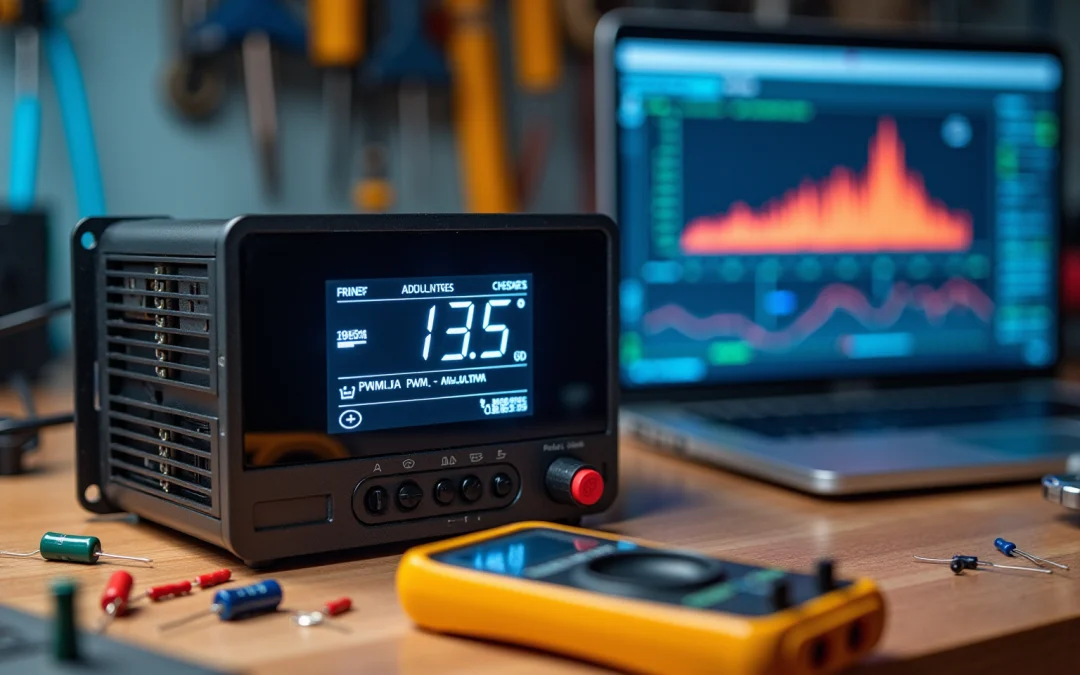Overview
The article emphasizes essential fan speed controllers tailored for electronics engineers, showcasing various types and their advantages in optimizing cooling performance and energy efficiency. It delves into advanced technologies such as PWM and hybrid controllers, demonstrating how these devices not only enhance system reliability but also reduce power consumption. This focus addresses the critical requirements of contemporary electronics engineering, providing actionable insights for professionals in the field.
Introduction
The realm of electronics engineering increasingly hinges on effective thermal management, which is vital for ensuring the optimal performance and longevity of devices. As advanced technologies continue to emerge, engineers now have access to a diverse array of fan speed controllers designed to not only enhance cooling efficiency but also minimize energy consumption and noise levels. Given the escalating demand for precision and adaptability, the question arises: how can engineers effectively select the appropriate fan speed controller to address their specific requirements while navigating the intricate landscape of modern electronics?
This article delves into eight essential fan speed controllers that promise to elevate performance and streamline cooling solutions for today’s engineers.
Gagner-Toomey Associates: Advanced Fan Speed Controllers for Electronics Engineering
Gagner-Toomey Associates stands at the forefront of innovation, delivering state-of-the-art fan control devices tailored for the electronics engineering sector. These advanced solutions not only enhance but also optimize the performance of electronic systems. By partnering with a diverse array of manufacturers, Gagner-Toomey equips engineers with access to cutting-edge fan speed controllers, which are crucial for maintaining optimal operating conditions across various applications, including power management and RF technologies.
Recent advancements, particularly in Pulse Width Modulation (PWM) technology, present significant advantages—demonstrating up to a 30% reduction in power usage and noise levels compared to traditional cooling systems. Real-world implementations in data centers reveal that the adoption of PWM fans can result in a remarkable 20% decrease in overall energy consumption, thereby enhancing both operational efficiency and system reliability.
As the electronics industry continues to evolve, Gagner-Toomey remains committed to equipping engineers with the most effective tools for managing thermal dynamics in their designs, ensuring they are prepared to meet the challenges of tomorrow.
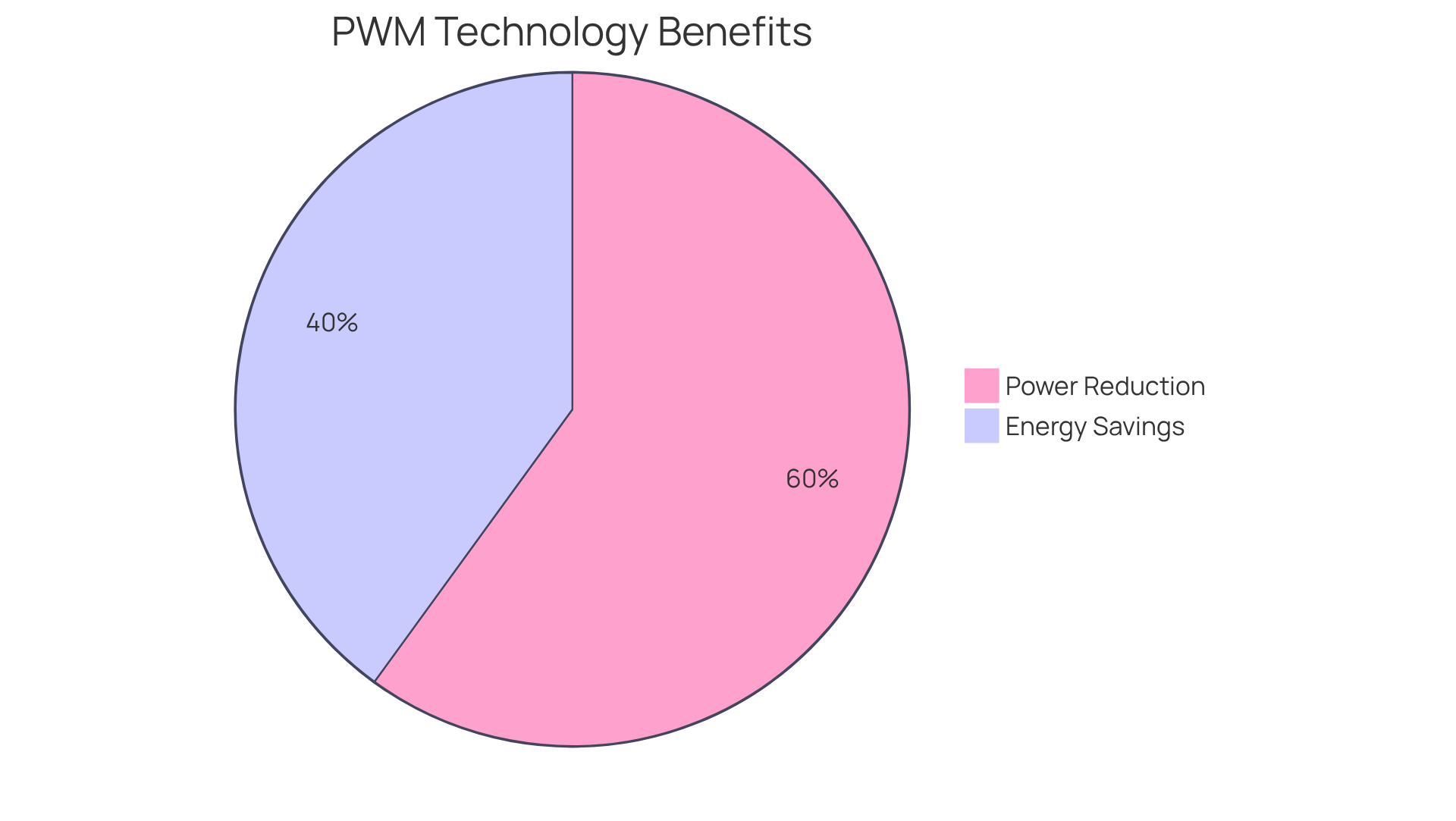
PWM Fan Speed Controller: Efficient Cooling Solutions for Electronics
Fan speed controllers, specifically PWM regulators, are recognized for their ability to dynamically adjust fan speeds based on real-time thermal requirements. By manipulating the width of the pulse signal sent to the fan, these devices enhance cooling efficiency while minimizing energy consumption. This technology proves particularly advantageous in environments characterized by frequent temperature fluctuations, enabling over airflow and noise levels. Engineers can leverage fan speed controllers and PWM devices to maintain electronic components within safe temperature ranges, ultimately extending their operational lifespan.
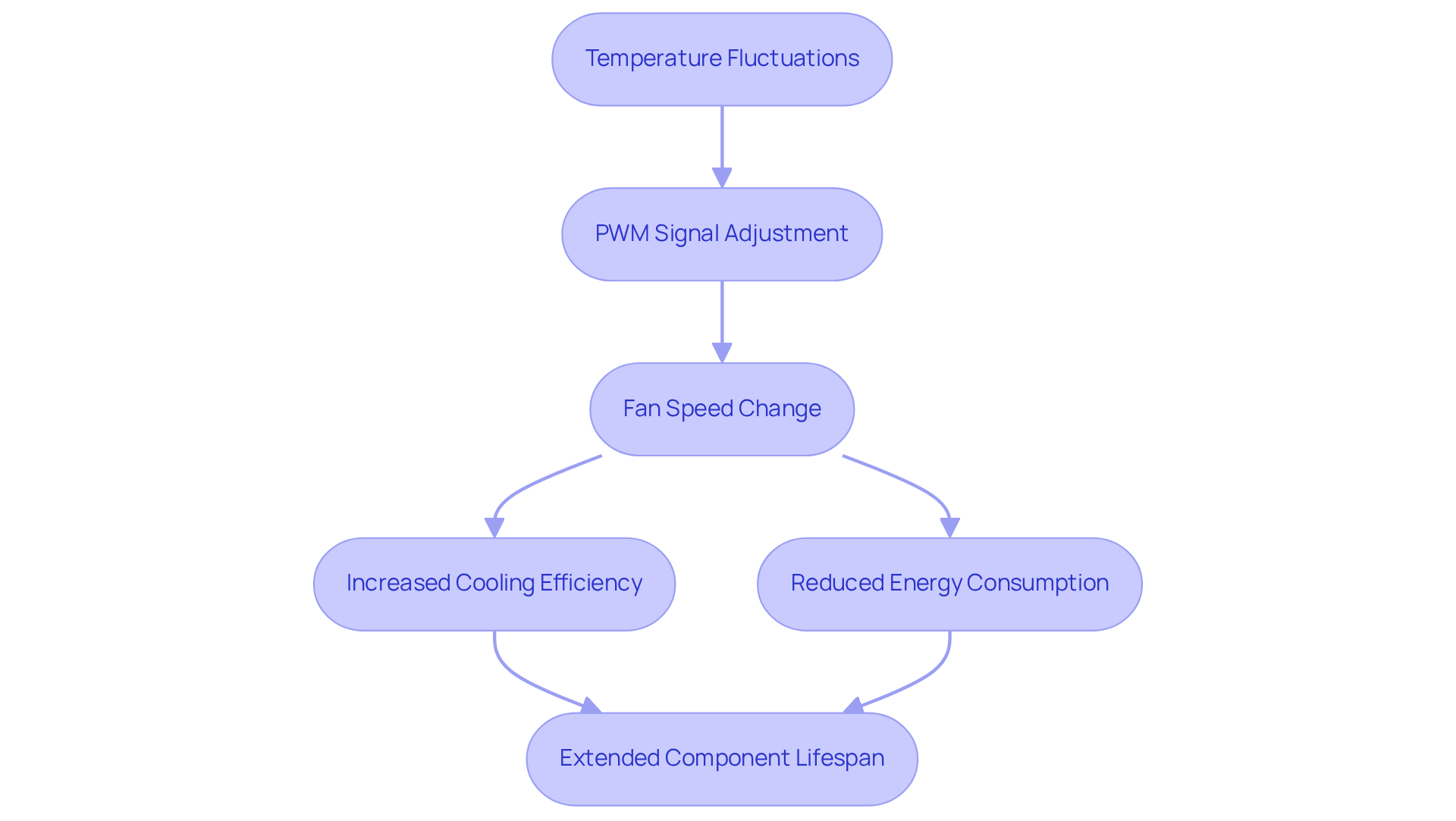
DC Fan Controller: Reliable Performance for Electronic Systems
Fan speed controllers are crucial for the functionality of various electronic systems, providing reliable performance across a multitude of applications. As a leading supplier of innovative cooling solutions, Gagner-Toomey Associates presents a comprehensive array of DC input tube axial devices and centrifugal blowers, meticulously optimized for performance, efficiency, and low noise. These devices come in sizes ranging from 15 to 280mm for tube axial types and 15 to 225mm for centrifugal blowers, with IP protection available upon request.
Fan speed controllers enable precise speed adjustments, allowing mechanisms to operate effectively under varying load conditions. By ensuring consistent airflow, fan speed controllers significantly reduce the risk of overheating, thereby protecting the optimal performance of electronic components. In settings where noise reduction is paramount, such as in medical devices, the quiet operation of Gagner-Toomey’s DC blower fans enhances user experience without sacrificing cooling efficiency.
Engineers can choose from an extensive selection of fan speed controllers tailored to specific application needs, greatly improving the overall reliability and longevity of their systems. The incorporation of high-frequency PWM control, functioning above 20 kHz, exemplifies advancements in fan technology, facilitating quieter operation and enhanced energy efficiency. This versatility renders fan speed controllers , spanning from laptops and gaming consoles to critical medical equipment.
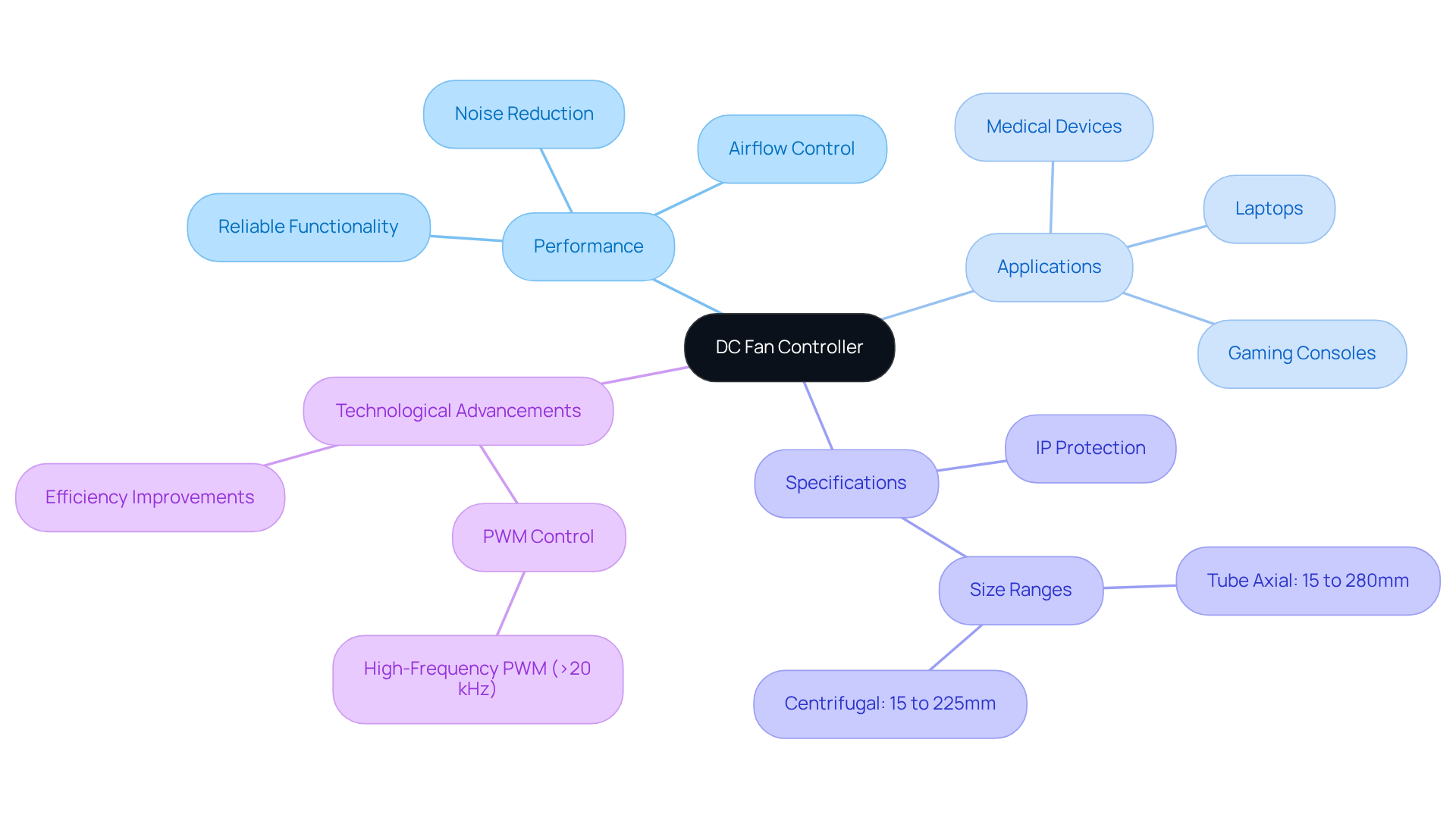
Variac Style Fan Speed Controller: Versatile Voltage Management
Fan speed controllers, specifically Variac-style, are distinguished by their versatile voltage management capabilities, enabling users to adjust fan speeds smoothly across an extensive range. By varying the voltage supplied to the fan, fan speed controllers facilitate precise airflow control while minimizing noise—a significant advantage over traditional methods. This feature proves particularly beneficial in applications where noise reduction is paramount, such as in laboratories or audio equipment.
For instance, employing a Variac can enhance performance by allowing engineers to adjust voltage levels, ensuring that devices operate quietly and efficiently. Furthermore, Variacs can be customized for specific applications, including the operation of DC motors with various voltage ratings.
It’s crucial to recognize that fans typically have a recommended operating voltage range of +/- 5%, underscoring the necessity for precise voltage management. Additionally, utilizing a Kill A Watt meter in conjunction with a Variac can assist in monitoring output voltage and load characteristics, providing valuable insights for engineers.
Recent advancements in Variac technology have further augmented their effectiveness, rendering them indispensable tools for engineers operating in sensitive environments. With the capacity to , Variacs are adaptable for various fan types, ensuring optimal performance and longevity.
Moreover, engineers must be aware of the potential hazards associated with using light dimmers for fan adjustment, as these can lead to motor damage. It is essential to ensure that voltage remains above the cut-in threshold for centrifugal starting switches to guarantee safe operation.
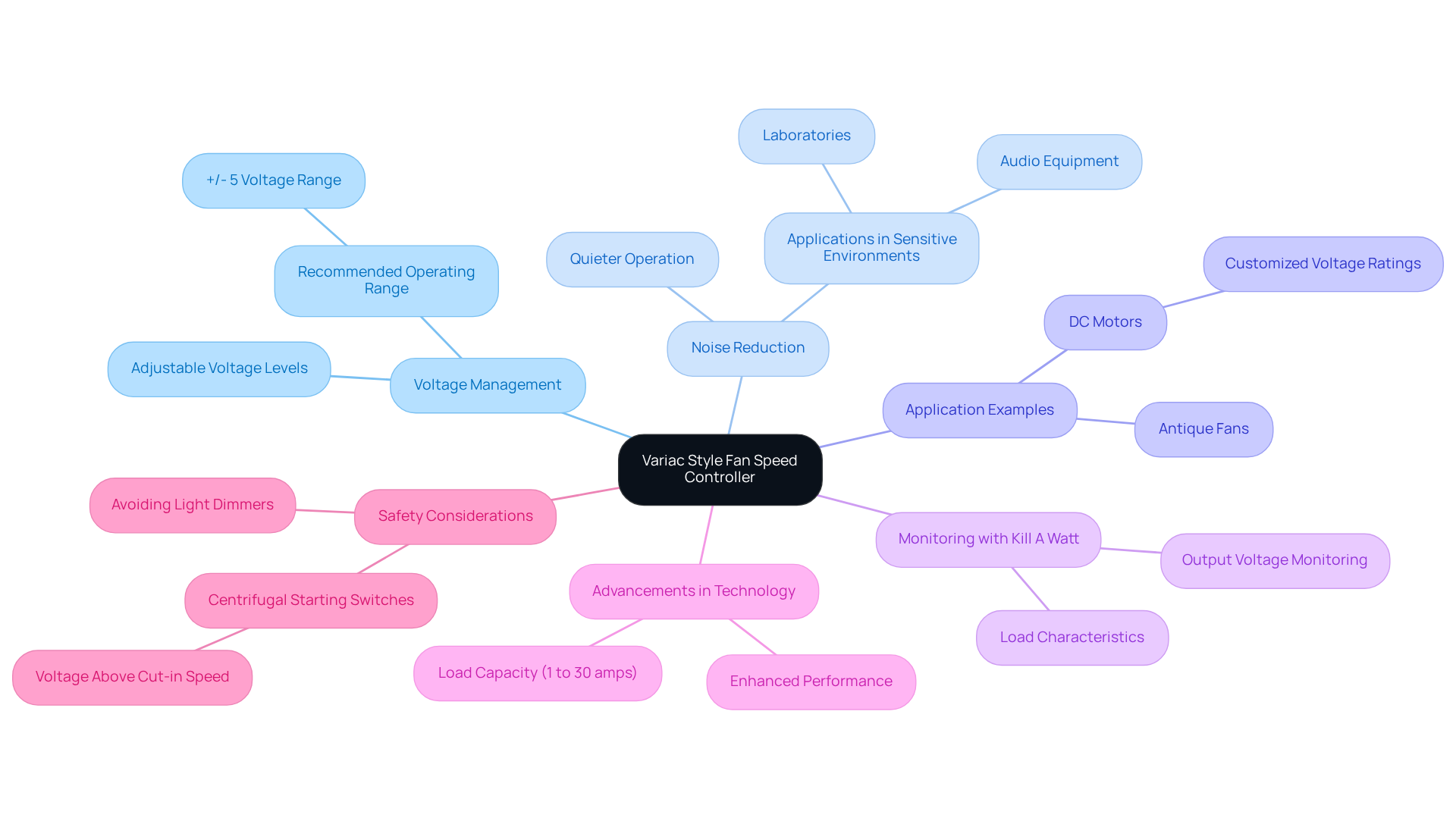
Hybrid Fan Speed Controller: Flexible Solutions for Diverse Applications
Fan speed controllers that are hybrid in nature integrate the leading attributes of PWM and DC management techniques, offering engineers versatile solutions across a wide range of applications. These devices automatically adjust fan speeds based on real-time temperature readings, while also allowing for manual adjustments when necessary. Such adaptability proves especially advantageous in dynamic environments, including industrial settings and high-performance computing, where conditions can shift rapidly.
The implementation of hybrid fan regulators can yield substantial energy savings; research indicates that these devices can function at speeds as low as 10% of their peak capacity, in contrast to conventional models that generally operate at a minimum of 50%. This capability not only but also prolongs the lifespan of electronic components by up to 50%, aligning with sustainability objectives.
Empirical evidence illustrates that hybrid fan speed controllers significantly enhance thermal management, ensuring optimal performance while also reducing energy consumption. As engineers increasingly pursue efficient cooling solutions, the adaptability and efficacy of hybrid fan devices establish them as a crucial option in modern electronics engineering.
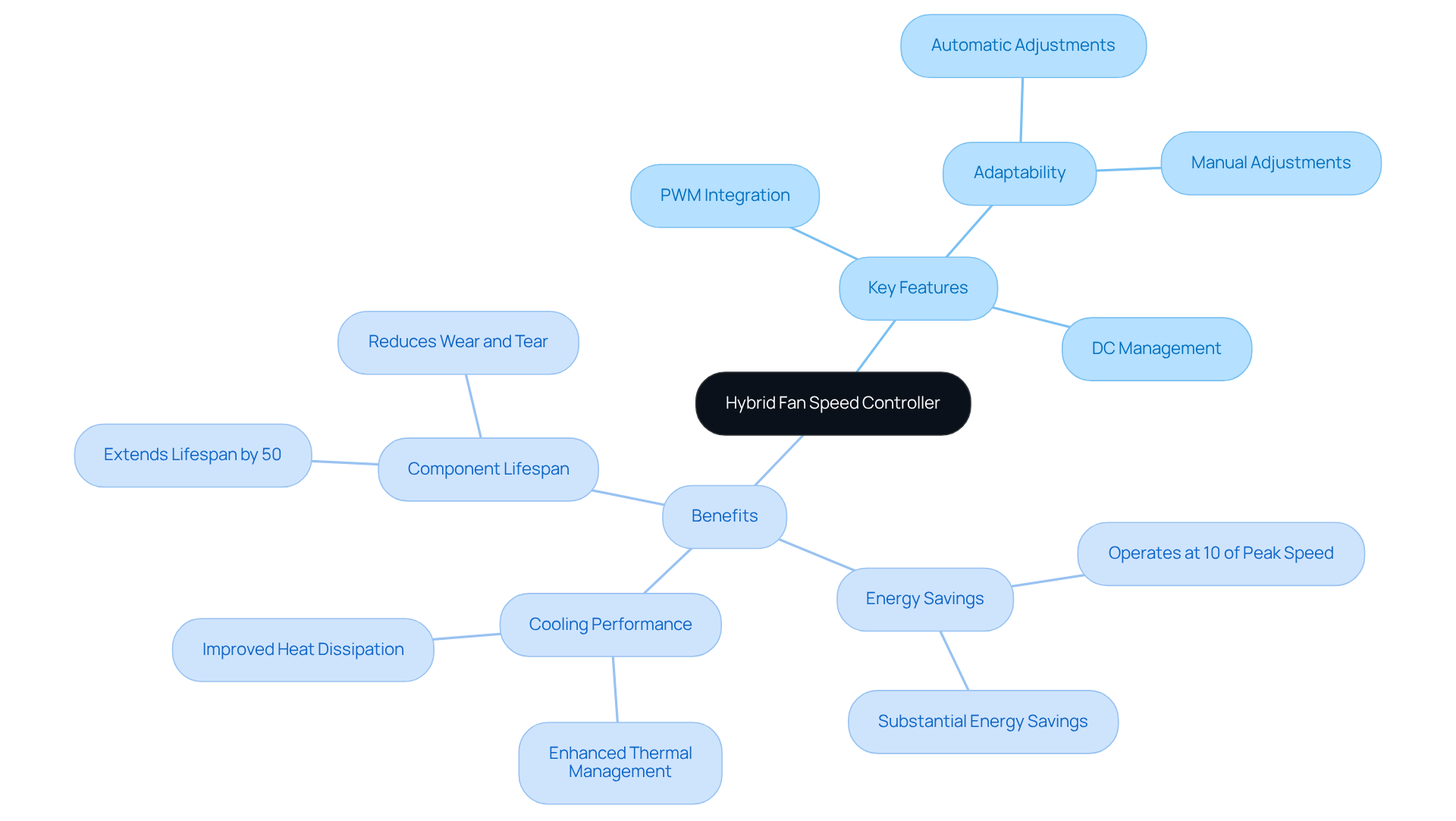
Centrifugal Fan Controller: Essential for Airflow Management
Fan speed controllers are essential in managing airflow in applications that require high pressure and volume. These sophisticated fan speed controllers provide precise velocity regulation, empowering engineers to optimize airflow to meet specific system requirements. Engineers can effectively control temperature and humidity levels across diverse environments, including HVAC systems, industrial processes, and electronic cooling applications, by utilizing fan speed controllers to adjust the speed of centrifugal fans. This capability not only but also significantly boosts overall performance.
Recent advancements, notably the integration of variable frequency drives (VFDs) with variable inlet vane (VIV) dampers, exemplify the forefront of airflow management innovations. This combination facilitates optimal control, minimizing surge risks while maintaining consistent pressure. In practical applications, performance metrics indicate that these controllers can achieve energy savings of up to 70% compared to traditional systems, highlighting their value in contemporary engineering solutions.
As the industry evolves, the adoption of intelligent EC devices with integrated monitoring capabilities further enhances airflow management, ensuring systems operate at peak efficiency while supporting sustainability objectives.
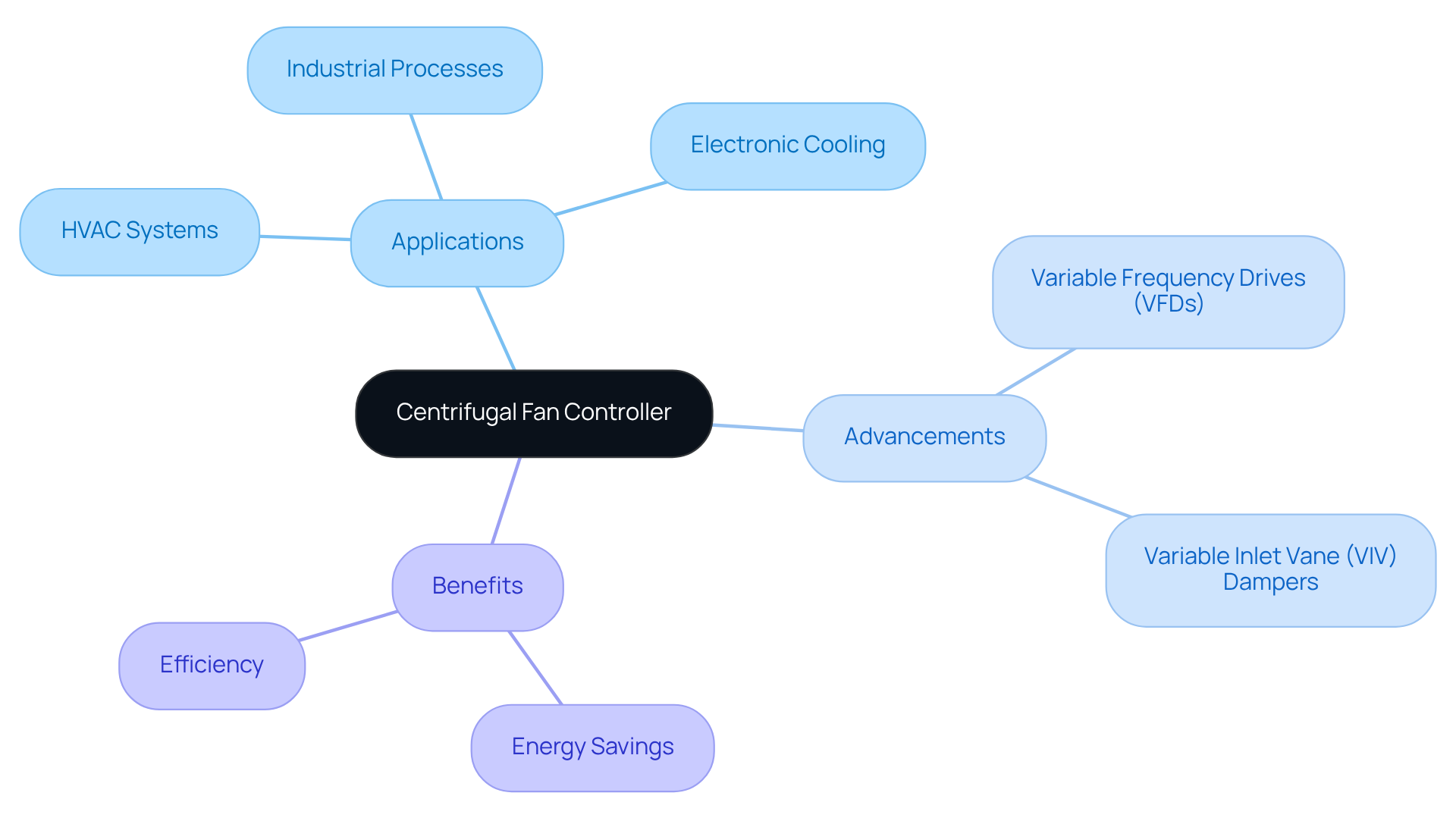
Commander Pro: Advanced Fan Speed Control for Precision Engineering
Introducing the Commander Pro, a sophisticated solution for fan speed controllers that is meticulously crafted for precision engineering applications. This advanced controller with fan speed controllers empowers users to operate multiple fans simultaneously, providing comprehensive management over fan rates and airflow configurations.
With features such as customizable fan curves and temperature monitoring, the Commander Pro enables engineers to by utilizing fan speed controllers in complex systems. Its user-friendly interface, combined with robust functionality, positions it as the ideal choice for professionals aiming to enhance their cooling strategies.
Elevate your cooling solutions with the Commander Pro—where precision meets performance.
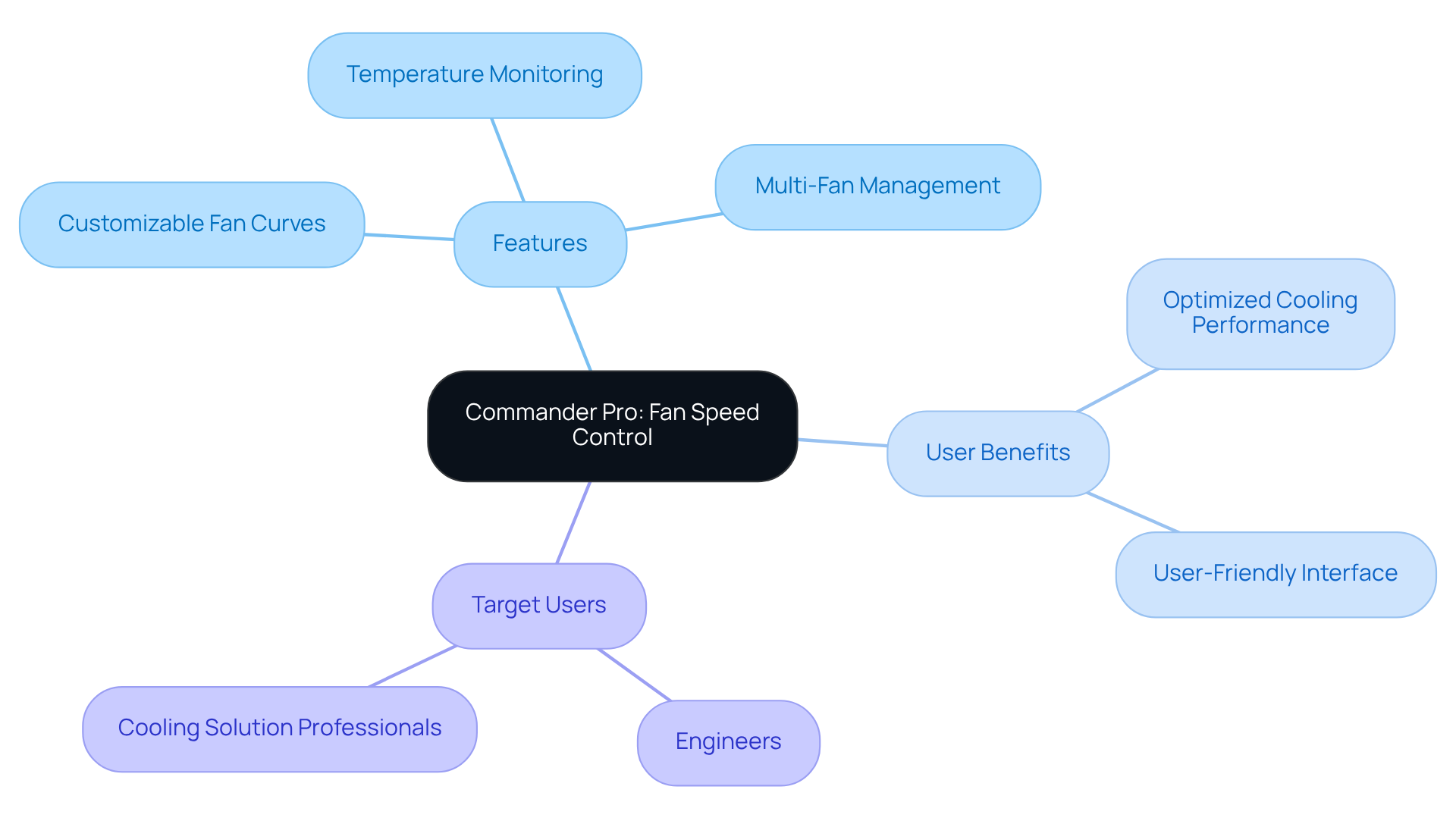
Argus Monitor: Software Solutions for Fan Speed Management
Argus Monitor serves as a robust software solution, delivering extensive features for fan speed controllers management that are essential for optimizing cooling systems. By enabling users to monitor and adjust fan rates through fan speed controllers according to various temperature sources, Argus Monitor significantly enhances cooling efficiency. This software proves particularly advantageous for engineers who require precise control over their systems, facilitating the establishment of custom fan curves and the automation of fan operation through fan speed controllers based on real-time data.
As noted by Hardeep Kaur, “Hardeep has always been a Windows lover ever since she got her hands on her first Windows XP PC,” which underscores the user-friendly nature of Argus Monitor for Windows users. With Argus Monitor, engineers can guarantee in their electronic systems.
For example, EasyTune 5 recommends setting CPU cooling fan rotation to full at 60°C, illustrating the industry standards that Argus Monitor adheres to. Furthermore, case studies indicate that effective fan operation management can lead to significant thermal regulation improvements, ultimately prolonging equipment lifespan. Engineers are urged to capitalize on Argus Monitor’s capabilities, particularly the use of fan speed controllers, to refine their cooling strategies and achieve superior thermal management.
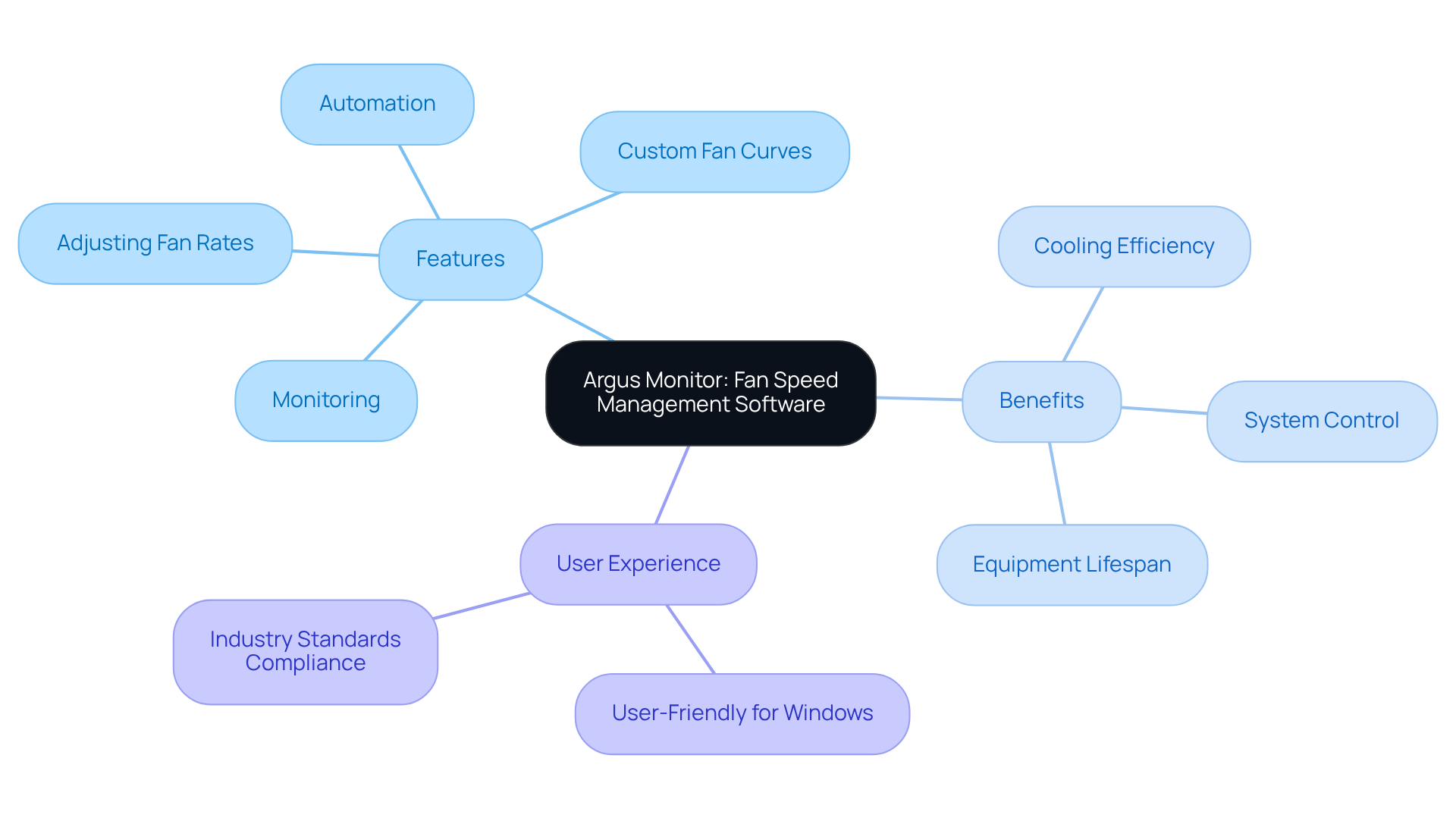
SpeedFan: Temperature-Based Fan Speed Control for Enhanced Performance
SpeedFan stands as a pivotal software solution, empowering users to adeptly manage fan speed controllers based on temperature readings from various components. By dynamically adjusting fan speed controllers in response to thermal fluctuations, SpeedFan plays a crucial role in sustaining optimal operating conditions while simultaneously reducing noise levels. This tool proves particularly advantageous for engineers engaged in high-performance systems, where efficient cooling is paramount. With its intuitive interface and customizable settings, SpeedFan equips engineers with the means to significantly and longevity of their electronic devices.
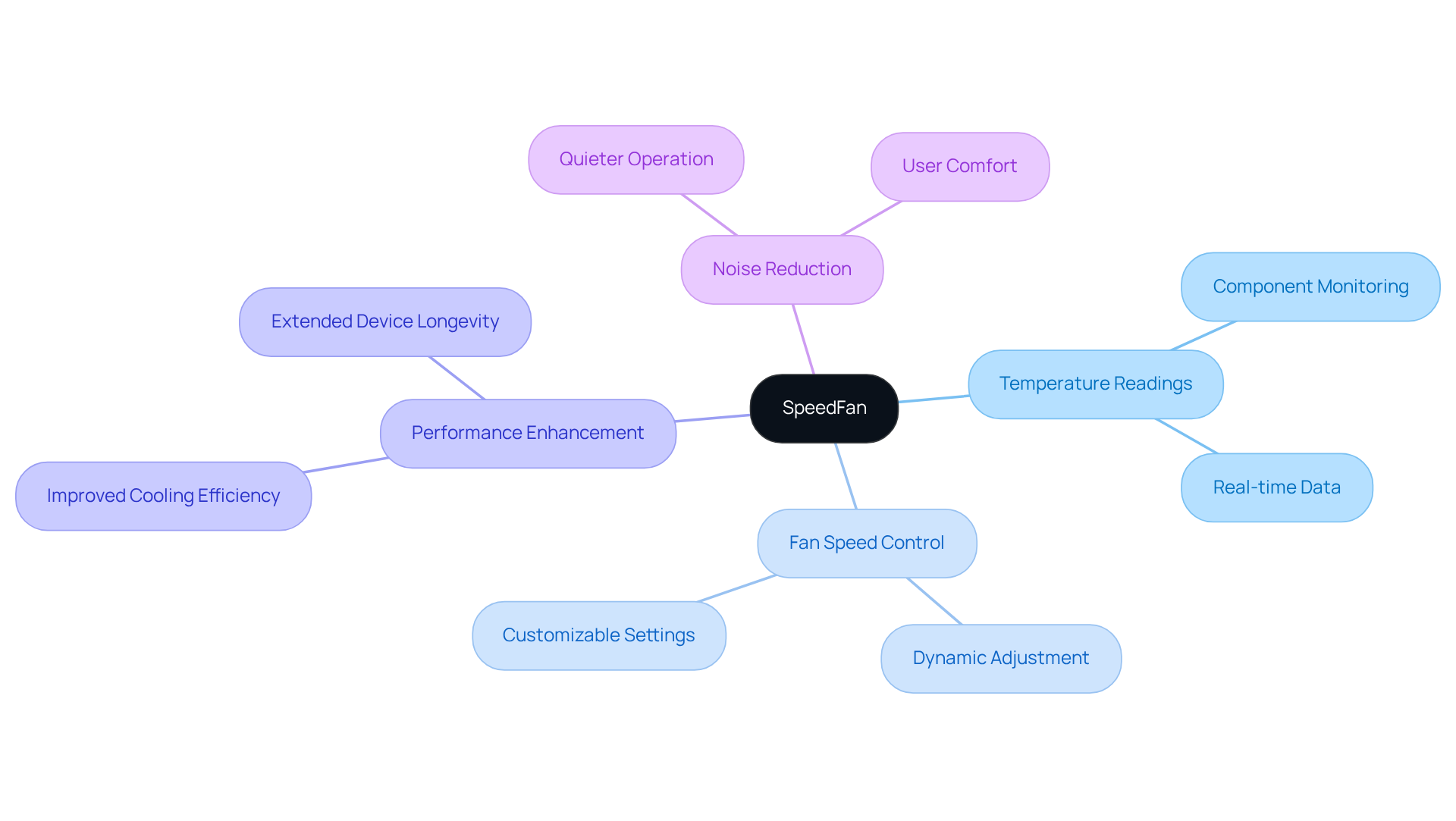
Fan Control: Customizable Solutions for Fan Speed Management
Fan speed controllers are essential customizable solutions for engineers seeking to optimize cooling performance in electronic systems. By providing adjustable settings for fan rates, airflow patterns, and operational modes, these solutions empower engineers to tailor cooling strategies to specific application requirements.
Recent advancements in fan regulation technologies have led to the development of sophisticated hardware devices and software applications that enhance flexibility and efficiency in thermal management. For instance, TITAN’s tailored RV fan velocity controller can manage not only fan velocity but also temperature, humidity, and odor levels, allowing for both automatic and manual adjustments. This has demonstrated improvements in energy efficiency and noise reduction, making it a compelling choice for diverse applications.
Data suggests that the implementation of fan speed controllers for adjustable management can yield significant enhancements in system reliability and performance, highlighting the critical role of these solutions in contemporary electronics design. Real-world implementations, such as TITAN’s high-performance ventilation systems, exemplify how effective fan control can boost user comfort and operational efficiency, reinforcing the importance of customizable fan control in the electronics industry.
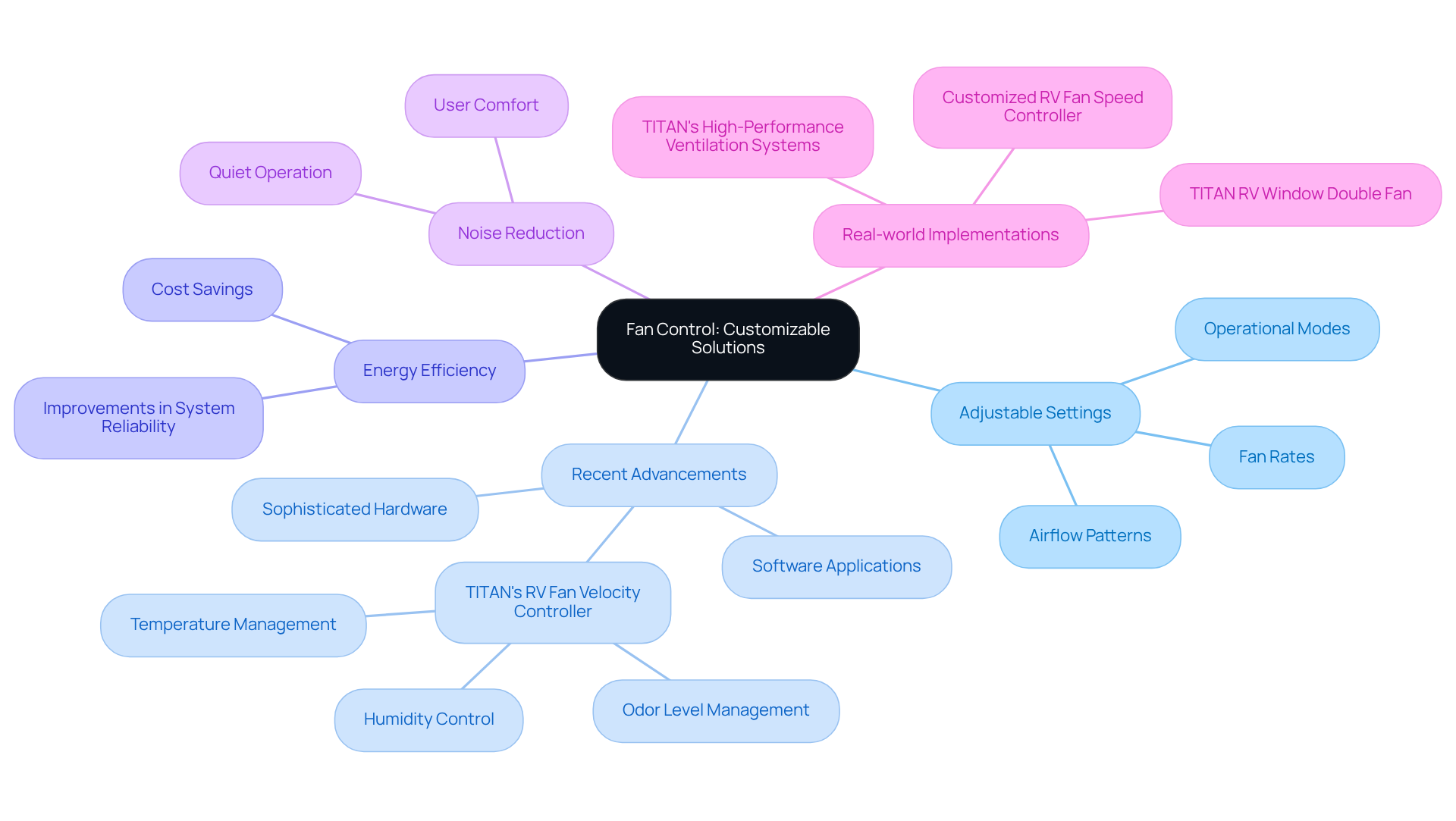
Conclusion
The exploration of fan speed controllers highlights their essential role in optimizing the performance and efficiency of electronic systems. By utilizing advanced technologies such as PWM, DC regulation, and hybrid solutions, engineers are empowered with tools that not only enhance cooling but also significantly reduce energy consumption and operational noise. This intersection of innovation and practicality guarantees that electronic components function within safe temperature ranges, ultimately prolonging their lifespan and reliability.
Key insights from the article illustrate the diverse applications and advantages of various fan speed controllers, including the remarkable energy savings achieved through PWM technology and the precise airflow management provided by centrifugal controllers. Furthermore, software solutions like Argus Monitor and SpeedFan enable engineers to tailor fan operations based on real-time data, thereby refining thermal management strategies.
In light of these advancements, the significance of selecting the appropriate fan speed controller cannot be overstated. As the electronics industry continues to innovate, engineers are urged to adopt these sophisticated solutions to enhance system performance, promote sustainability, and address the evolving demands of technology. By prioritizing efficient cooling strategies, the future of electronic engineering can be both sustainable and high-performing.
Frequently Asked Questions
What is Gagner-Toomey Associates known for?
Gagner-Toomey Associates is known for delivering advanced fan control devices tailored for the electronics engineering sector, enhancing cooling efficiency and optimizing the performance of electronic systems.
What technology do Gagner-Toomey fan speed controllers utilize?
Gagner-Toomey fan speed controllers utilize Pulse Width Modulation (PWM) technology, which demonstrates up to a 30% reduction in power usage and noise levels compared to traditional cooling systems.
How does PWM technology benefit data centers?
The adoption of PWM fans in data centers can lead to a remarkable 20% decrease in overall energy consumption, enhancing operational efficiency and system reliability.
What are the advantages of using PWM fan speed controllers?
PWM fan speed controllers dynamically adjust fan speeds based on real-time thermal requirements, enhancing cooling efficiency while minimizing energy consumption and allowing for precise control over airflow and noise levels.
What types of devices does Gagner-Toomey offer?
Gagner-Toomey offers a comprehensive array of DC input tube axial devices and centrifugal blowers, optimized for performance, efficiency, and low noise, available in various sizes.
How do fan speed controllers contribute to the performance of electronic systems?
Fan speed controllers enable precise speed adjustments, ensuring consistent airflow, reducing the risk of overheating, and protecting the optimal performance of electronic components.
Why is noise reduction important in certain applications?
Noise reduction is crucial in applications such as medical devices, where quiet operation enhances user experience without sacrificing cooling efficiency.
What features do Gagner-Toomey fan speed controllers include?
Gagner-Toomey fan speed controllers include high-frequency PWM control functioning above 20 kHz, facilitating quieter operation and enhanced energy efficiency.
In what types of devices are fan speed controllers indispensable?
Fan speed controllers are indispensable in a variety of modern electronics, including laptops, gaming consoles, and critical medical equipment.

